Making Toys and Games work for Neurodivergent and Disabled Kids
Toys and games are meant to bring joy, but for neurodivergent and disabled children, the wrong type of gift can lead to frustration or even distress. Many popular toys are designed without considering sensory sensitivities, motor challenges, or specific developmental needs.
This article is for parents looking to learn about adapting toys and games for neurodivergent and disabled kids, especially gifts that might not initially seem suitable. By making thoughtful adaptations, you can ensure that every child feels delighted and included.
This guide will show you how to:
- Identify toys that can be safely adapted.
- Transform unsuitable toys into engaging tools for your child.
- Use creative methods to ensure every gift has a purpose.
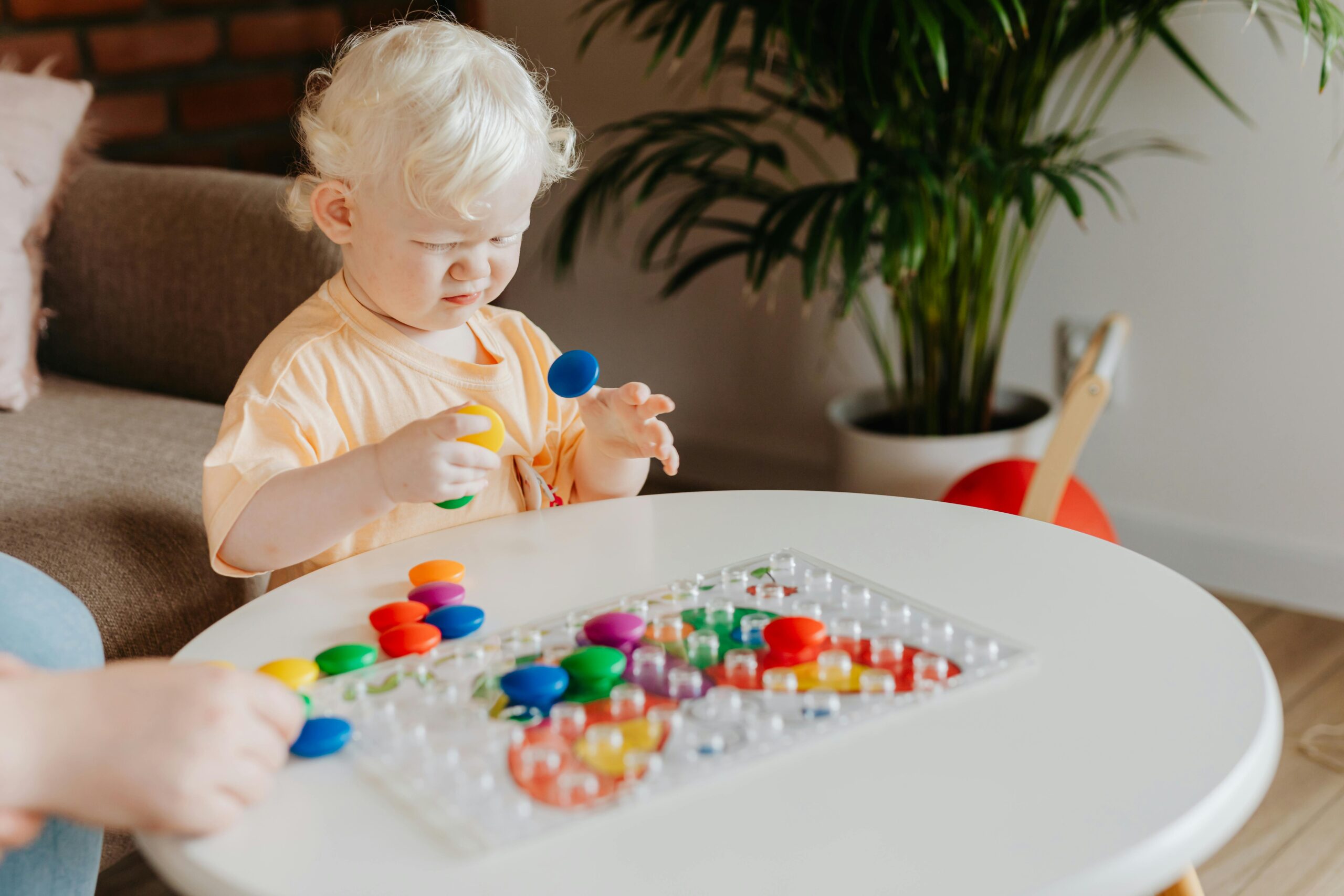
Ask yourself:
- Does this toy contain dangerously small pieces for my child to play with right now?
- If so, can I discard those little pieces and still have enough of the toy to play with?
If not, this toy might have to be put away for another day.
If you have determined that the toy is safe, here are suggestions for adaptations for toys and games.
How to Adapt Toys and Games
Adapting toys and games for fine motor support
If some of the pieces are just too thin for your child to hold, consider widening them by wrapping them with foam or fabric (if your child can chew through foam).
Other ideas:
- Add handles
- Mold modeling clay around pieces or handles for a sturdier grip
- Add VELCRO for stabilizing toy on a table so that your child can reach it
- Use the toy on a slip-free mat (like the ones you use to line your drawers—again, for stabilizing)
- Try using suction cups (for stabilizing)
- Use contact paper faced up and edges taped to the table (for stabilizing)
- Add magnetic tape to the bottom of light-weight toys and use on magnetic board (always be vigilant when using magnetic items)
- Attach the toy to a switch-activated button
- Remove the small dice from a game and create your own using foam or wooden cubes (found in craft shops in any size)
- Remove the dice altogether and use a spinner
- Interlock and glue several small puzzle pieces together onto stock card and cut them out to create larger puzzle pieces that are easier to manipulate
Play is for everyone.
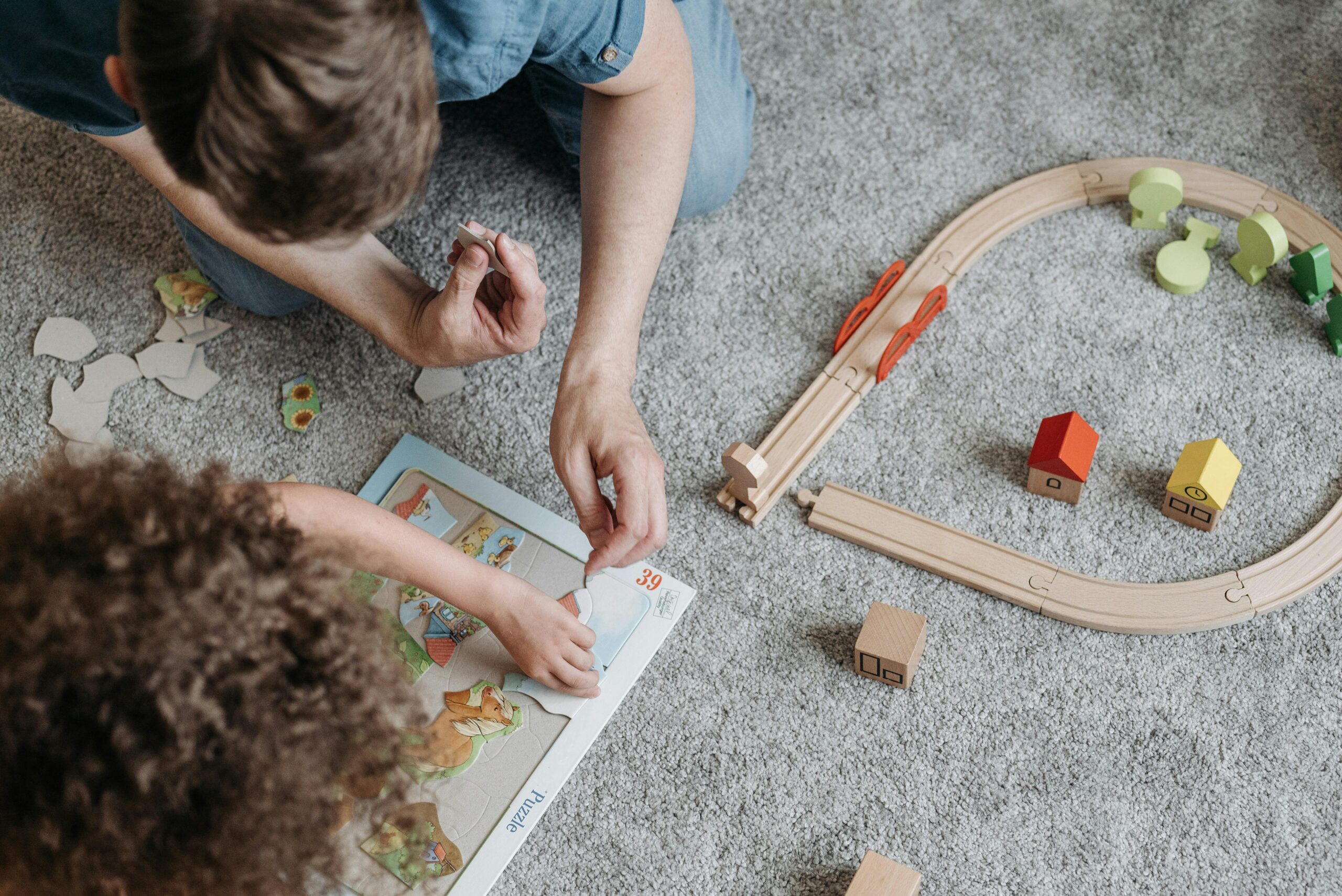
Adapting toys and games to reduce sensory overload
- Replace batteries to disable noise or flashing lights
- Add soft fabric or remove rough edges for tactile comfort
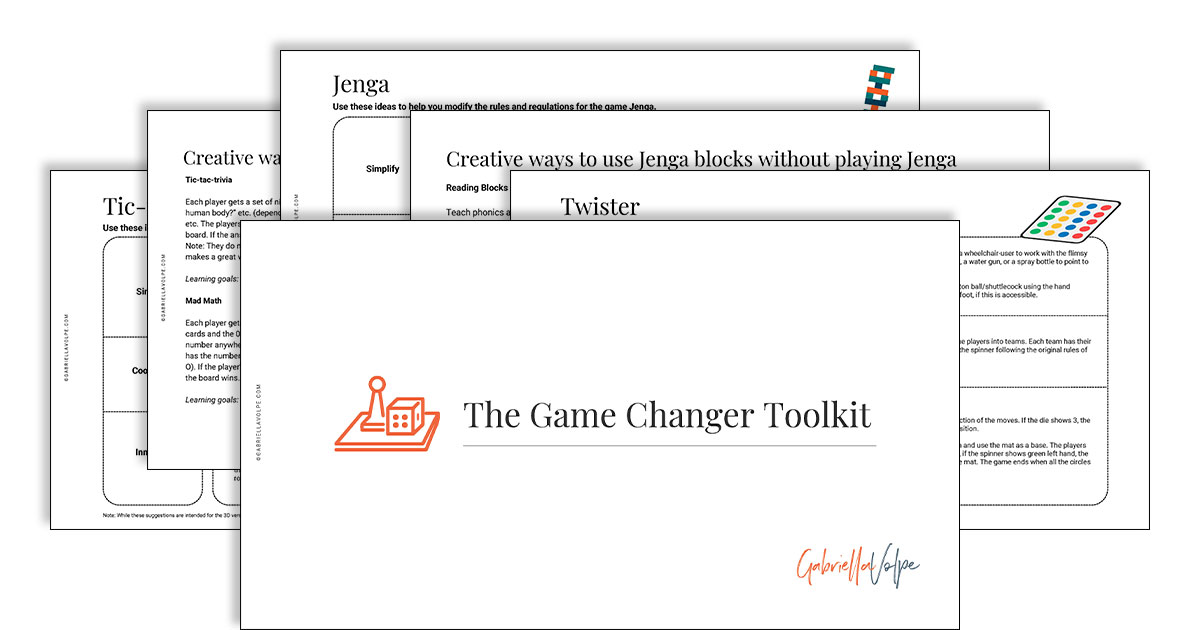
Game Changer Toolkit
Learn to modify board game rules to meet players where they are. For homeschoolers, educators, therapists.
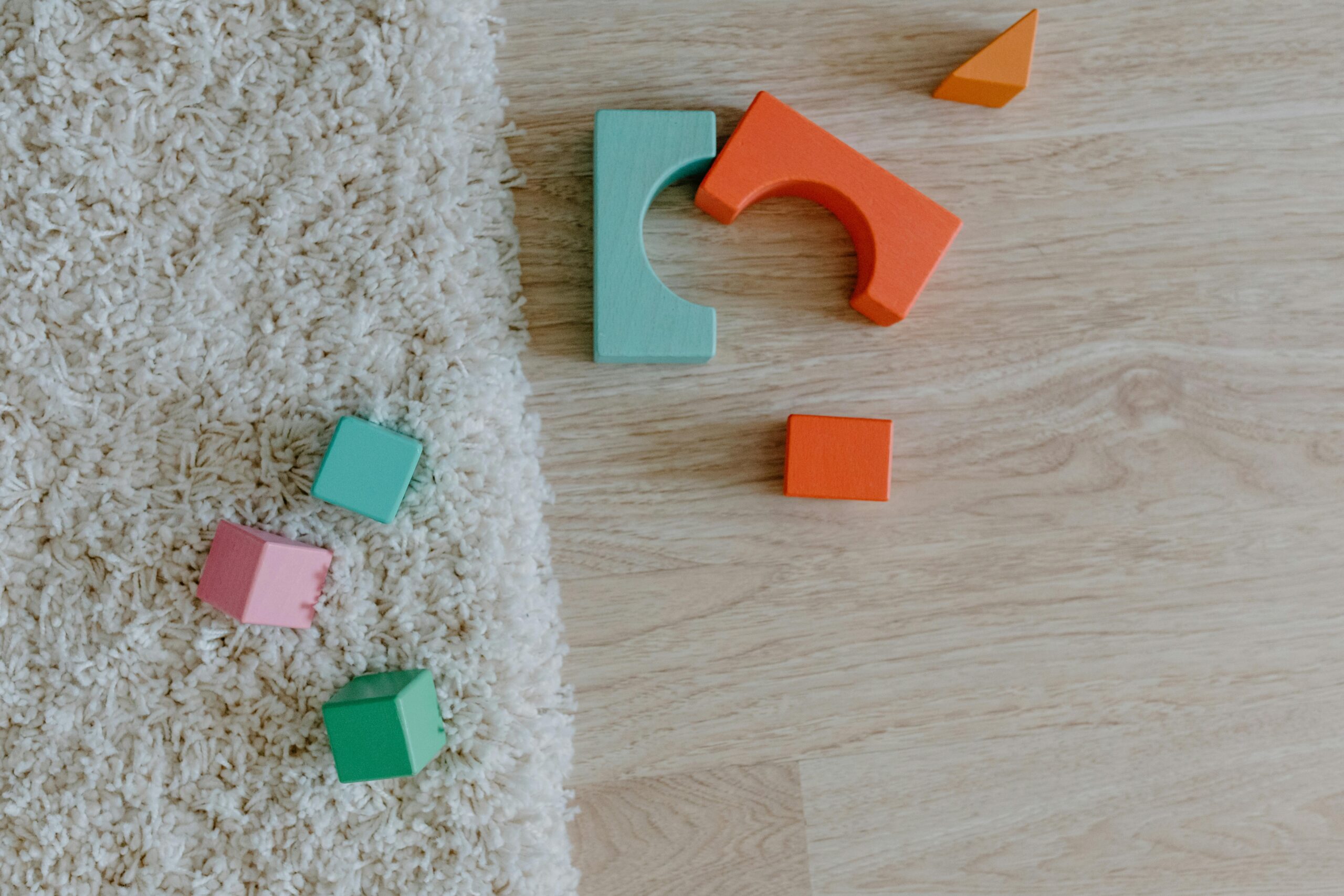
Adapting toys and games for alternative uses beyond their original design
Always keeping safety in mind, ask yourself how the toy can be used in ways not typically played with this particular toy.
Some examples:
- Use blocks for counters in math
- Take image cards from a game, laminate them, and use them for visuals within your lessons
- Make up your own rules using the board of a board game
- Scan to enlarge small cards from a game and laminate them
- Use sponges from a paint set or light-weight toys in the bathtub as floating toys
- Use bath toys for storytelling/puppetry (e.g., fish, boat, etc.)
- Take the pieces of a shape sorter to use in a sensory bin for teaching colors, shapes, etc.
- Use a keyboard to teach how to use a pointer finger or to teach imitation of sounds (i.e., you play, they play)
- Use pieces of a stacker to teach how to place objects in a laundry basket, then introduce increasingly smaller containers
- Use figurines or shapes for print painting
- Melt too-thin crayons and create larger ones yourself (or even different shapes like grasping balls or molded into silicone baking molds)
- Use dolls to teach parts of the body, family members, community members, etc.
- Use hoola hoops for containing play toys in one area on the floor (esp. those that like to roll off on their own)
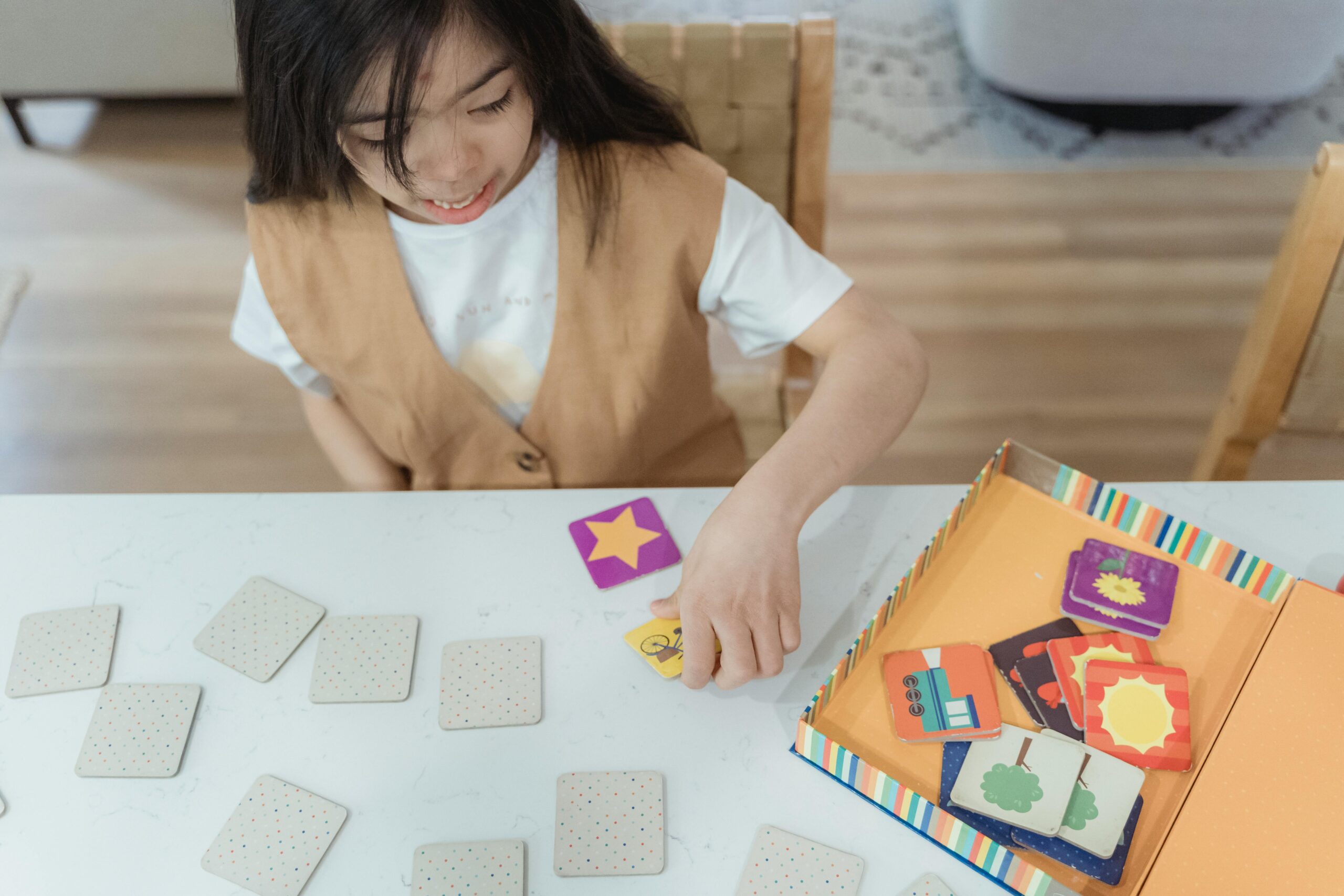
When your child receives duplicates
… return one, or you can find great educational value in having multiples.
- Use double wooden puzzle pieces for matching games
- Use doubles of figurines for matching and counting
- Use doubles of books for cutting the images (yikes!) of one book, laminating them, and using them for matching to the story or for extension activities (such as storytelling and puppetry)
When to choose adaptive toys over DIY solutions
DIY adaptations are affordable and fun, but professionally adapted toys can sometimes offer more durability and usability. These are particularly useful for children with more complex needs or for parents who want reliable, ready-made options.
What about toys that just don’t work?
Some toys might not fit your child’s needs, no matter how creative you get. That’s okay! Here’s what you can do:
- Donate
- Schools, therapy centers, or toy libraries often welcome donations.
- Swap with other parents
- Start a toy exchange group to trade for items that are better suited for your child. Many local swap groups can be found online as well.
Related article
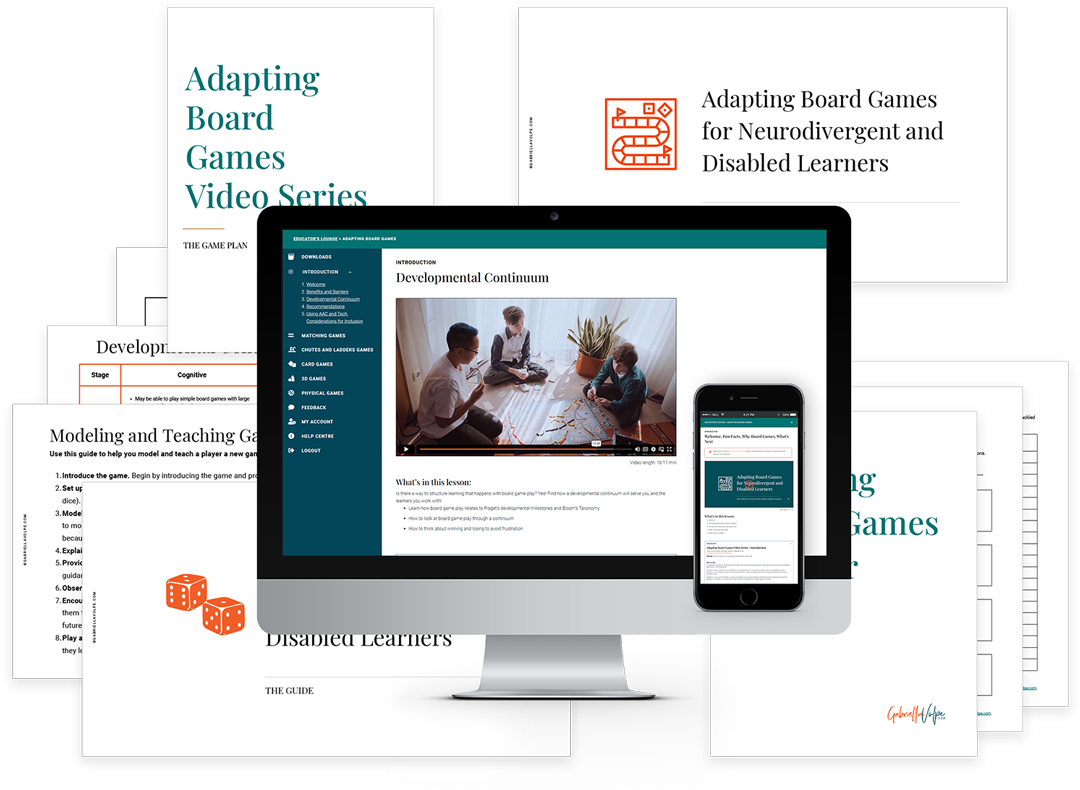
Adapting Board Games Video Series
Learn how to create inclusive play experiences for neurodivergent or disabled learners.

0 Comments